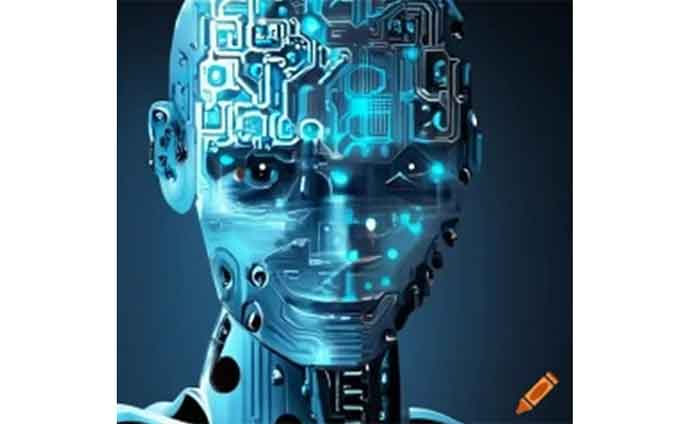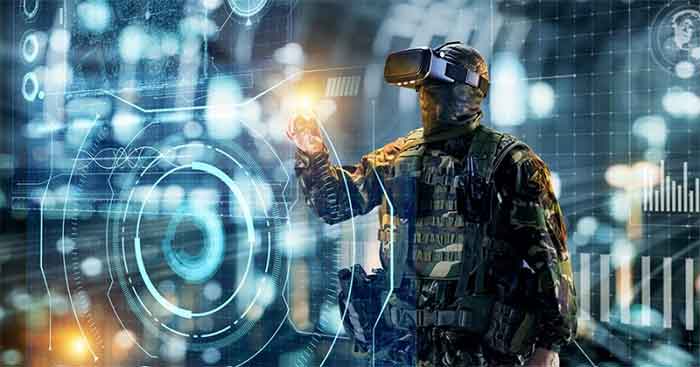by Omar Raad Chowdhury and Md. Abdul Aahad

Throughout the history of human civilization, there have been three industrial revolutions: the first industrial revolution in the late 18th century, characterised by the mechanization of production, primarily through the use of water and steam power; the second industrial revolution in the late 19th century, marked by the development of electricity, the internal combustion engine and the expansion of mass production technologies; and lastly, the third industrial revolution, also known as the Digital Revolution, of the late 20th century.
Now, we are at the cusp of another wave of technological innovation, more commonly known as the fourth industrial revolution, epitomized in the advent of Artificial intelligence (AI). Debates on the impact of AI have been raging for quite some time; yet previously it was a reference to the future. As Generative Artificial Intelligence (GAI) tools such as ChatGPT, Google Bard, and Midjourney, among many others, continue to profuse throughout industries, it seems that full-scale automation is not a far cry.
Innovation and adoption of new technologies is a natural process that has its roots within society’s constant drive to generate and manage resources. The OECD broadly defines technology as, “the state of knowledge concerning ways of converting resources into outputs”. Considered in the framework of a production possibility frontier (PPF), technological progress as a parameter increases the marginal productivity of labour or a greater level of production with the level of input remaining the same. Thus, technological change causes an outward shift in the PPF, which means economy produces and consumes more than previously.
However, the theoretical manifestation of productivity boost through technological change may prove to be elusive in the real world, as aptly put by Robert Solow in 1987, “you can see the computer age everywhere but in the productivity statistics”. The “productivity paradox”, has pervaded throughout the decades since Solow’s remarks, in an age when information technology and automation have become more commonplace than ever before. In the US, the average productivity growth in the decade ending 2005 was 2.8%, which since then has slowed by half, indeed.
At the firm level, introducing capital-biased technological change holds the promise of increased productivity. Hence, AI technology and automation tools that are cheaper and can replace labour are at greater demand.
Thus, the pessimistic projections of job loss. Goldman Sachs, the investment bank, has predicted that AI could replace the equivalent of 300 million full-time jobs. The impact, however, will vary across different sectors – 46% of tasks in administrative and 44% in legal professions could be automated, but only 6% in construction and 4% in maintenance. Since 2000, robots and automation systems have eliminated around 1.7 million manufacturing jobs.
In May 2023, AI technology, it was reported, caused the displacement of over 4,000 jobs in the US, when layoff announcements exceeded 80,000, marking a 20% increase from the previous month and nearly quadruple the figures from May the previous year. Among these layoffs, AI was responsible for 3,900 job losses, accounting for approximately 5% of the total jobs affected. This positions AI as the seventh-largest contributor to job reductions in May 2023, according to employer reports.
AI can affect workers across all sectors and skill levels. With GAI, skills that are seen as inherently involving human cognitive abilities, such as writing, music composition or data analysis can be replicated by machines. While the current GAI tools are yet to be perfect and often fall short, the rapid pace of development of Large Language Models (LLMs) and other technologies is a real threat to the future of such high-skill, creative work.
An analysis by LinkedIn found that among the 38,000 skills listed by its members, there more than 500 skills that are most likely to be replicable by GAI. Notable among these replicable skills are writing, editing, documentation, translation, video, photography, music, content creation, financial reporting, email marketing, data analysis, software development tools, programming languages, and data science.
However, the future is not all bleak. Some forecasts say, AI could create 97 million jobs as well, by 2025. The displacement effect of AI and automation is unlikely to materialise in the short term, as there are significant challenges to innovation, adoption and cost structure. Some experts also assume jobs requiring a high level of social or emotional intelligence may not be vulnerable to the AI transition due to the mountainous challenges of building a “human-like” AI.
Furthermore, new occupations, yet unknown to us, may spring up in the fields related to the development and deployment of AI. One study has identified three types of future jobs: trainers, who will train AI systems; explainers, who will interpret the outputs generated by AI systems; and sustainers, who will monitor the work of AI systems.
Nevertheless, the question remains whether the jobs created within the AI industry and as a spillover of AI innovation will offset the jobs eliminated by AI. The AI transition also raises the question of under-consumption. By all accounts, it seems that a massive replacement of jobs, albeit gradually and over the long term, is plausible. It is uncertain as to how and at what pace the displaced labour will be integrated into the new industries, assuming there will be, within or induced by AI. In such a scenario of high unemployment, it is only likely that there will be underconsumption, which can then translate to serious macroeconomic challenges.
The only way out, it seems, is a cautious and coherent approach to the whole AI wave. There is no denying that AI holds great potential for the welfare of human society and innovation has its own pace. However, policymakers need to be proactive in instituting legal mechanisms that will monitor and regulate the innovation and adoption of AI. All relevant stakeholders, especially those upholding the interests of the labour, need to cooperate to ensure the accountability of companies developing AI. At the top of their agenda should be the social ownership of AI — a model that will put the well-being of the community above profiteering and private gains.
Omar Raad Chowdhury, Research Associate, SANEM. Email: [email protected]. Md. Abdul Aahad, Research Associate, SANEM. Email: [email protected]
[Note: A slightly different version of this article appeared in the October 2023 issue of Thinking Aloud, a monthly publication of the South Asian Network on Economic Modelling, a think tank in Bangladesh]















































